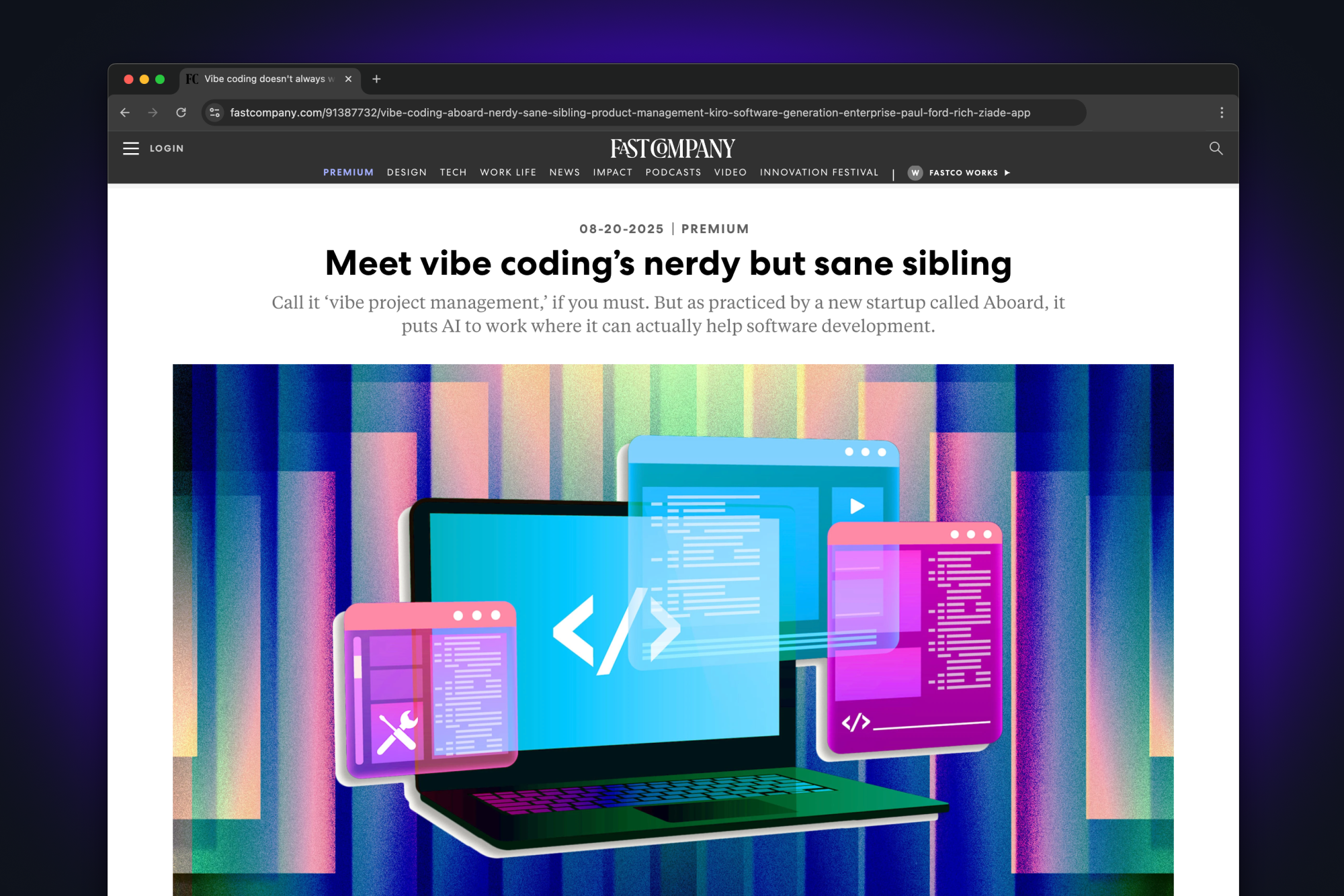Fast Company on Aboard: It’s a Vibe Product! And It Works!
“Lumbering, unsexy, but essential.” There’s no higher praise.

You got a Fast Company. I want a ticket to anywhere.
A few weeks ago, a journalist at Fast Company named John Pavlus contacted us. Like all good journalists, he was pretty suspicious. Aboard, a small startup in NYC run by two noisy podcasting software dads, seemed to be using AI to generate business software at a level of quality above that offered by giant, billion-dollar unicorn Nordic vibe-coding startups. But it also offered…services? What was going on?
Over the next few weeks, we had several conversations where we explained our approach, and frankly, he grilled us pretty hard. But the upshot is that Pavlus explained our company (gift link) and our ambitions better than we’ve been able to do. This is annoying to me, because that’s supposed to be my job—but it’s a truly good, clear portrait of where we are as an organization.
Aboard is pursuing a different approach. Call it “vibe product management.” Instead of using AI to jump right into generating code (and holding on for dear life), business leaders can work with “solution engineers” at Aboard who use AI to turbocharge the planning and discovery phases of enterprise software development—the lumbering, unsexy, but essential work of deciding what components to code and how to assemble them reliably.
I had to stop reading there so I could get the words “lumbering, unsexy, but essential” tattooed on my throat, but once I came back to the article, I was glad to see just how carefully it laid out our real strategy and what we’re trying to accomplish—and that you can do better than vibe coding:
“We do not let AI near the code,” Ford [that’s me!] says. And what you receive isn’t a preview either—the result is a live working web app with a shareable URL, no broken buttons or missing features, and a real back end that’s prepopulated with placeholder data. When I gave them a similar prompt, neither Replit nor Lovable hit all those marks without throwing errors, running out of starter credits, or asking me for upsells.
And then, critically, this part about our strategy:
Aboard is betting on businesses realizing that vibe coding platforms are throwing AI at the wrong problem. The first three to six months of any enterprise software project typically don’t involve much code at all. Instead, a ton of time and money is often spent aligning on what to code, then producing a first draft based on that specification just so “people can give feedback on what sucks,” Ford says.
This is exactly what Aboard aims its AI “vibes” at accelerating: It turns out that bots can assemble and iterate on those detailed, bespoke product specifications—the “blueprints”—very, very quickly, while snapping together non-buggy first drafts (using human-coded parts) quickly, too.
“The product we’re able to deliver is the destruction of, like, 20,000 meetings,” Ford says. It may not be finished software, instantly—that’s a fantasy—but it is the beginning of a journey toward finished software that doesn’t feel like a money pit or a death march.
That’s exactly right. We want you to have access to good tools, yes, but we also want you to have fewer meetings. If we can kill the weekly eighteen-person product roadmap check-in and just deliver good software instead of more documents? Then our time on this planet will be worth it. We’re on our way, and we’re grateful that Fast Company thinks our story is worth sharing.


